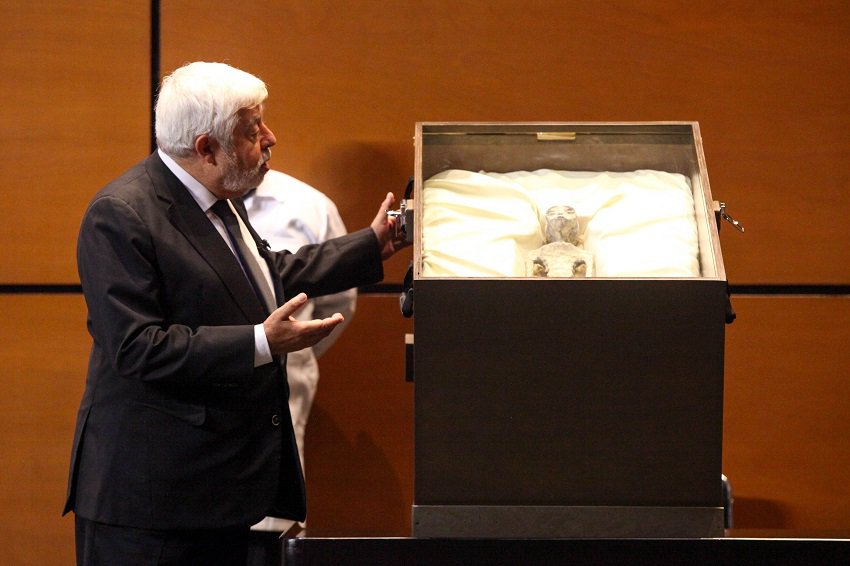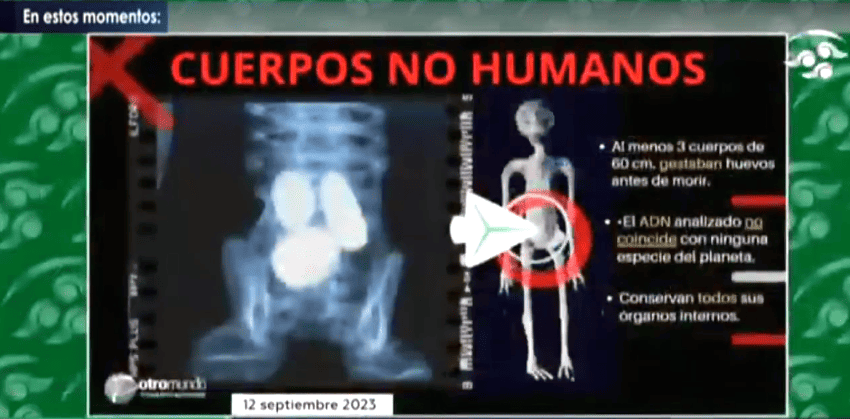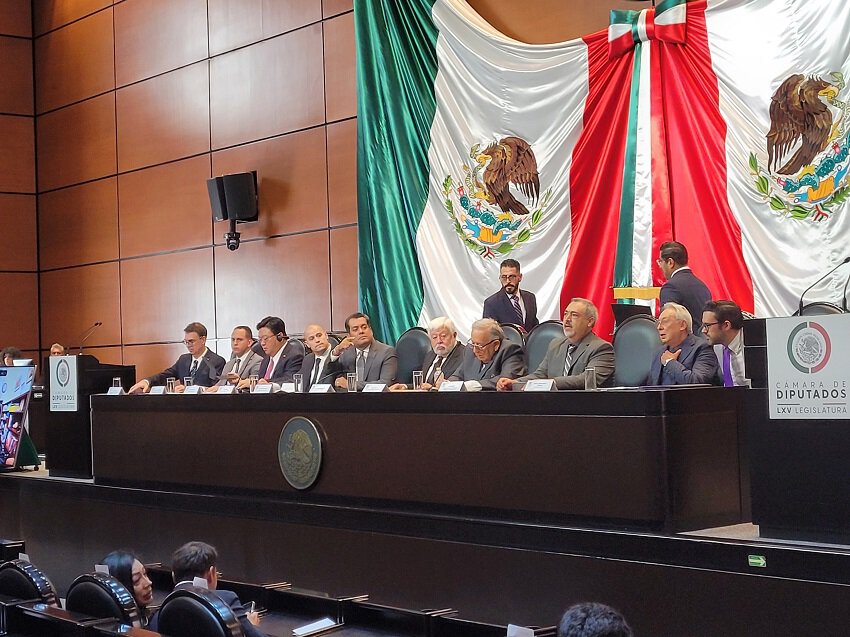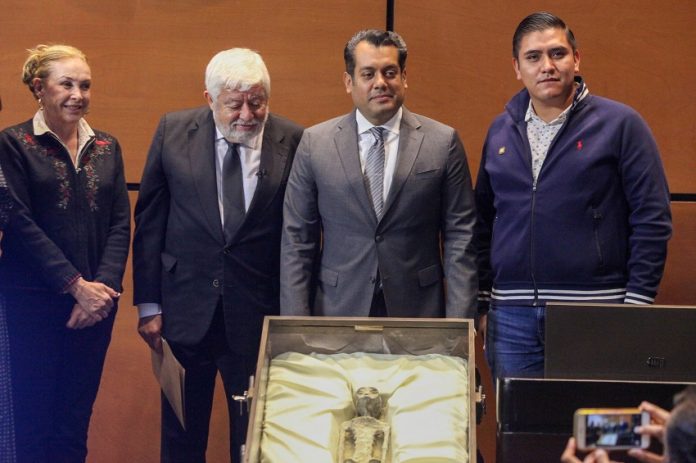A Mexican journalist and self-described ufologist made quite a revelation during testimony in front of Mexico’s Chamber of Deputies this week — two specimens that he claimed were the 1,000-year-old corpses of extraterrestrials.
“These are not mummies,” Jaime Maussan said under oath about the two tiny bodies with big heads, long necks and three fingers on each hand. The bodies – which resemble the archetypal depiction of a gray alien – were found in Peru in 2017, Maussan said, adding that carbon dating by Mexico’s National Autonomous University (UNAM) showed they died a millennium ago. “We are not alone,” Maussan, 70, intoned.

The extraordinary testimony heard by lawmakers on Tuesday in Mexico City was Mexico’s first ever hearing on UFOs, which these days are usually termed Unidentified Anomalous Phenomena (UAP), or FANI in Spanish. Mexico has a high rate of reported UAP sightings, ranking seventh in the world in 2020.
Maussan insisted that the specimens, which were brought into the chambers in two caskets, are not related to any life on Earth. “There is a clear demonstration that we are dealing with non-human specimens that are not related to any other species in our world, and that all possibilities are open for any scientific institution to investigate,” he said.
Similar finds presented by Maussan and others in the past have been dismissed by scientists as ancient Peruvian mummies, mummified children or manipulated mummies. Maussan stated that the two corpses at the hearing are not mummies, but rather “bodies that are intact, complete, that have not been manipulated inside and that have a series of elements that make them truly extraordinary.”
Maussan, who has hosted a television show on UAP since the early 2000s, claimed the alleged aliens had big brains and big eyes that “allowed for a wide stereoscopic vision,” and that they lacked teeth, so they likely only drank and did not chew.

The hearing in the Legislative Palace of San Lázaro — at which lawmakers were also shown videos of Mexican pilots struggling to make sense of fast-moving flying objects before them — included experts speaking in support of Maussan. But some who spoke felt Maussan’s claims were an “unsubstantiated stunt” and “a huge step backwards for this issue.”
For example, Ryan Graves, executive director of Americans for Safe Aerospace (ASA) and a former U.S. Navy fighter pilot, was invited to speak. In July, he testified in front of a U.S. Congress subcommittee investigating the existence of UAP.
In a post on X, formerly Twitter, he said he accepted the invitation “hoping to keep up the momentum of government interest in pilot experiences” with UAP. But a day after the hearing, he distanced himself from it.
“Unfortunately, yesterday’s demonstration was a huge step backwards for this issue,” he wrote. “My testimony centered on sharing my experience and the UAP reports I hear from commercial and military aircrew through ASA’s witness program. I will continue to raise awareness of UAP as an urgent matter of aerospace safety, national security, and science, but I am deeply disappointed by this unsubstantiated stunt.”

And then there was José de Jesús Zalce Benítez, director of the Scientific Institute for Health of the Mexican Navy, who said X-rays, 3D reconstruction and DNA analysis had been carried out on the remains.“I can affirm that these bodies have no relation to human beings,” he told the lawmakers.
In light of the hearing, UNAM reissued a statement from 2017 saying the work by its National Laboratory of Mass Spectrometry with Accelerators (LEMA) was only intended to determine the age of the samples. “In no case do we make conclusions about the origin of said samples,” the statement said.
Maussan’s presentation created a whirl of activity on social networks, with backlash and criticism from skeptics. NASA indicated it would discuss the briefing on Thursday.
With reports from El Financiero, El Universal, NPR and Reuters
